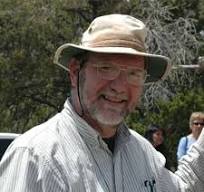The Galisteo Basin as a Multicultural Landscape – Eric Blinman
Puebloan peoples are stereotyped under a single label, which is a profound injustice to their rich cultural diversity. This diversity also implies the existence of distinct histories, and the unique setting of the Galisteo Basin provides an opportunity to explore these histories. The uniqueness of the Galisteo Basin is largely due to its susceptibility to climate change and the interaction of the environment with human economies. Tiwa, Tewa, Tano, Towa, and Keres cultural groups were well established in north central New Mexico at the beginning of the twelfth century, enjoying a stable climate pattern that supported a cultural florescence in the Four Corners region. Drought and a change in the monsoon rainfall pattern in the mid-to-late 12th century disrupted the stable cultural geography, and the Galisteo Basin was opened to agricultural homesteading. By the mid-twelfth century, more than five generations before the Mesa Verde abandonment, immigrants began colonizing the Basin. More than 200 years of conflicts-of-interest and conflict ensued, resulting in the 15th century formation of the Galisteo Basin Pueblos, and giving form to the cultural diversity encountered during European colonization.
Eric Blinman began studying archaeology in 1967, eventually getting degrees in anthropology from UC Berkeley and Washington State University. He joined the Museum of New Mexico’s archaeology program in 1988 as a laboratory supervisor for projects in the Four Corners region of New Mexico. In 1992-1993, Eric was introduced to Galisteo Basin archaeology by Tim Maxwell and John Ware as a field conservation specialist, working to document perishable ceremonial artifacts that had been encountered by Forrest Fenn’s excavations at Pueblo San Lazaro. Those were also the years that the Office of Archaeological Studies (OAS) edited and published Christina Singleton Mednick’s “San Cristobal: Voices and Visions of the Galisteo Basin.” Tim’s relationship with the Singleton family resulted in more than three decades of access to Galisteo Basin archaeology by OAS archaeologists, including Eric. He has brought his knowledge of Four Corners pottery, ceramic technology, paleoenvironments, and cultural affiliation studies to the problems and potentials of the complex history of the Galisteo Basin.

